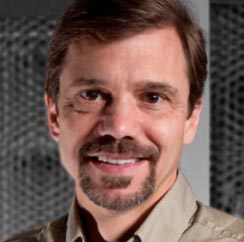Spanning Time and Spatial Scales: Modeling Our Planet's Climate
Keith Dixon, a research meteorologist and climate modeler at NOAA's Geophysical Fluid Dynamics Laboratory discussed how scientists develop and use climate models to understand how our planet's global climate system works, and how models can help us answer questions relevant to society. Dr. Dixon’s presentation included how computer climate models are constructed, what they share in common with weather forecast models and how they differ, their strengths and weaknesses, and how experiments are designed to use climate models to address a range of "what if...” questions.

Keith Dixon is a research meteorologist and climate modeler at NOAA's Geophysical Fluid Dynamics Laboratory (GFDL) located in Princeton, New Jersey. His expertise lies in the use of state-of-the-art computer models to simulate the Earth's global climate -- past, present, and future. Since joining GFDL in the 1980s, Keith's research has focused on using complex computer models to study climate change and variability, often with an emphasis on decadal to centennial time scales. He also has an interest in promoting the communication of scientifically credible information from the realm of the large-scale physical climate to the more local-scale impacts of interest to many decision-makers and the public. Keith was named in 2008 as the first winner of NOAA’s Dr. Daniel L. Albritton Outstanding Science Communicator Award for excellence in communicating NOAA science and research to non-scientific audiences. Prior to joining GFDL’s research team, Keith, whose undergraduate and graduate degrees in meteorology are from Rutgers, worked a bit as a radio broadcast meteorologist in the northeastern US.
Education
Webinar Archives Education ResourcesStewardship
Supporting Stewardship Past Projects Focus Area Resources Applying for Funding
Search Education
Get Social
Last updated: 06/16/24
Author: NOAA
How to cite this article
